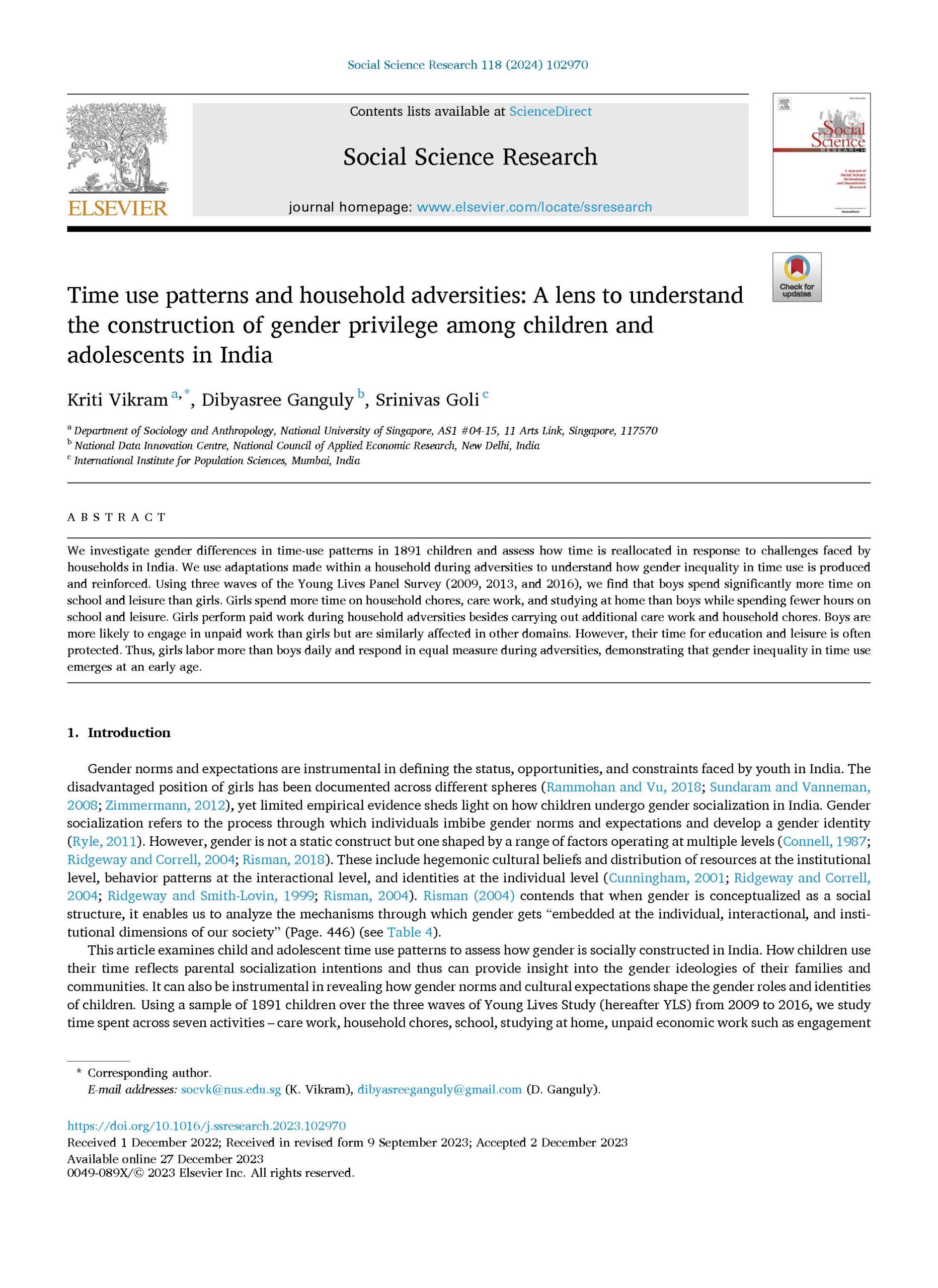
We investigate gender differences in time-use patterns in 1891 children and assess how time is reallocated in response to challenges faced by households in India. We use adaptations made within a household during adversities to understand how gender inequality in time use is produced and reinforced. Using three waves of the Young Lives Panel Survey (2009, 2013, and 2016), we find that boys spend significantly more time on school and leisure than girls. Girls spend more time on household chores, care work, and studying at home than boys while spending fewer hours on school and leisure. Girls perform paid work during household adversities besides carrying out additional care work and household chores. Boys are more likely to engage in unpaid work than girls but are similarly affected in other domains. However, their time for education and leisure is often protected. Thus, girls labor more than boys daily and respond in equal measure during adversities, demonstrating that gender inequality in time use emerges at an early age.